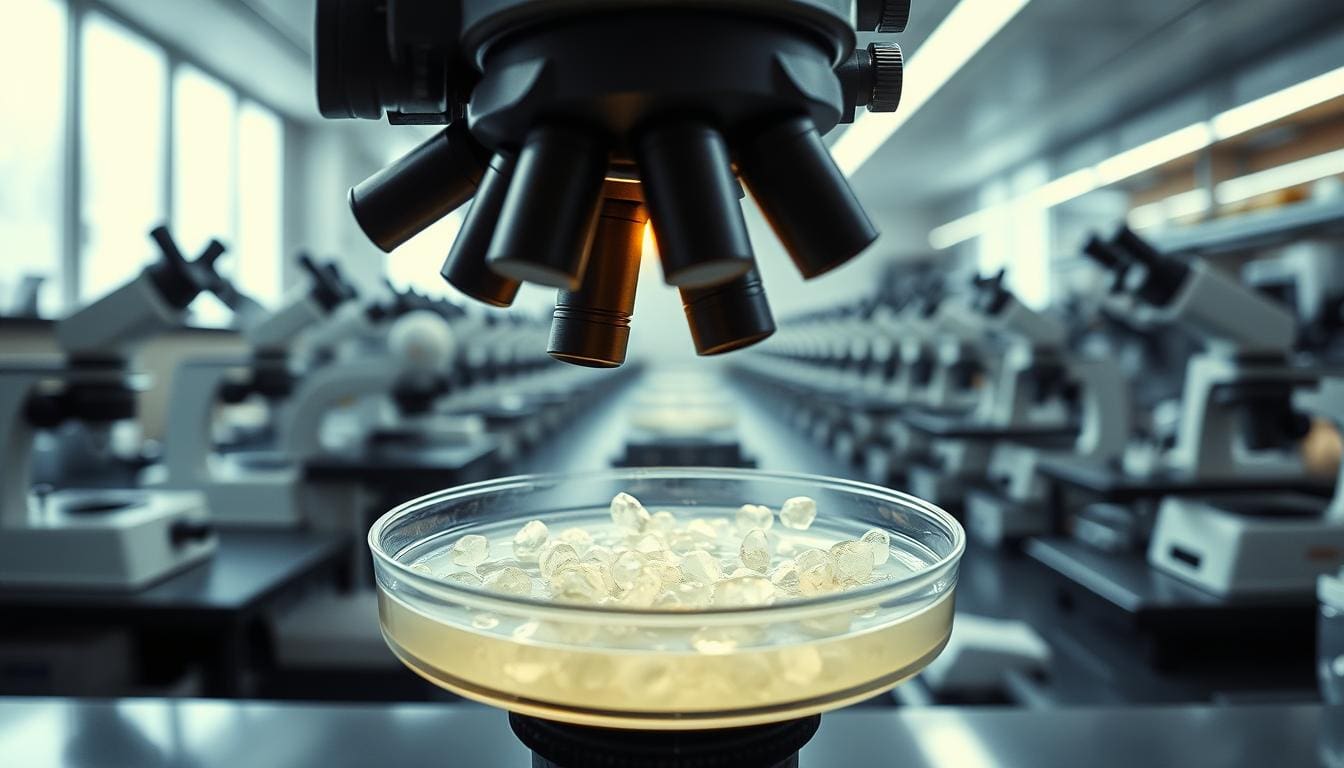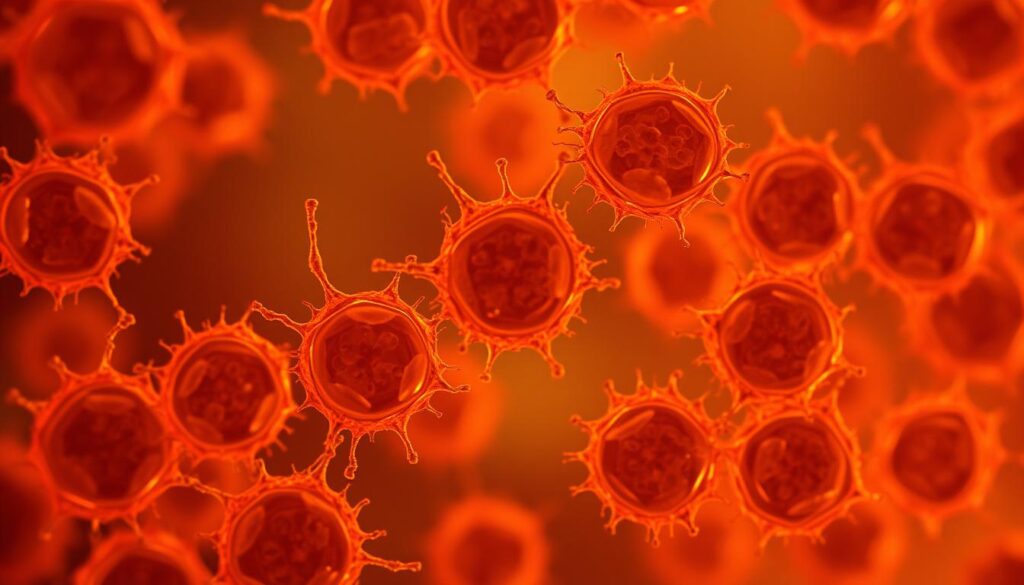
At Liv Hospital, we understand the huge role HeLa cells play in medical research. They come from Henrietta Lacks’ cervical cancer cells. These cells have changed healthcare a lot.
HeLa cells have helped make many medical discoveries. They are key in regenerative medicine and cell regeneration. Their ability to grow back makes them very useful in finding new treatments.
We use HeLa cells to improve healthcare. We focus on our patients and offer top-notch care. We also help international patients with our services.

Henrietta Lacks, an African American woman, unknowingly gave us the HeLa cells. These cells are key in medical research. We’ll look at how they were found and their big impact on science.
Henrietta Lacks was born on August 1, 1920, in Roanoke, Virginia. She came from a poor African American family. Later, she moved to Baltimore, where she was diagnosed with cervical cancer in 1951.
Her cancer was very aggressive, and it was during her treatment that the cells that would become known as HeLa were taken. We now know that Henrietta’s cells were different. They grew fast and were very resilient.
The discovery of HeLa cells was a big step in cell culture technology. It allowed scientists to do experiments they couldn’t before.
We now know that the immortality of HeLa cells is due to an enzyme called telomerase. This enzyme rebuilds the telomeres at the ends of chromosomes. It stops the cells from aging. This discovery has helped us understand cancer better and find new treatments.

HeLa cells are special because they can keep dividing forever. This makes them very important in medical research. Scientists can study human cells for a long time without worrying about them dying.
HeLa cells are immortal, which is different from normal human cells. Normal cells can only divide a certain number of times. This immortality is key for ongoing research, letting scientists keep experimenting and studying.
Several factors make HeLa cells special:
HeLa cells stay immortal because they keep their telomeres long. Telomeres are the protective caps at the ends of chromosomes. The enzyme telomerase helps rebuild telomeres, stopping them from getting shorter like in normal cells.
To understand HeLa cells’ immortality, we look at their genetics and biology. The table below shows important points:
| Characteristic | Description | Implication |
|---|---|---|
| Telomerase Activity | Presence of telomerase enzyme | Prevents telomere shortening |
| Genetic Mutations | Accumulation of mutations over time | Contributes to cancer-like behavior |
| Cellular Regeneration | Ability to regenerate and proliferate | Enables continuous cell culture |
We know that HeLa cells’ immortality comes from many genetic and environmental factors. By studying them, we learn about cellular regeneration and their immortality. This knowledge helps us in biological repair and regenerative medicine.
HeLa cells have a unique genetic makeup. This is key in studying how cancer grows. Their genetic traits have helped us learn a lot about cancer biology.
HeLa cells have big chromosomal issues. These issues let the cells live forever and grow without stopping.
Key chromosomal abnormalities in HeLa cells include:
| Chromosomal Feature | Description | Implication |
|---|---|---|
| Hyper-triploidy | Modal chromosome number of 82 | Contributes to genetic instability |
| Translocations and Rearrangements | Multiple structural changes | Affects gene expression and function |
| Marker Chromosomes | Presence of distinctive chromosomes | Used in identifying HeLa cells |
HeLa cells have helped us understand cancer better. They have shown us which genes and pathways are involved in cancer growth and spread.
Studying HeLa cells gives us insights into cancer’s genetic roots. By looking at their genetic flaws, researchers can learn more about cancer’s growth.
HeLa cells have greatly helped medical research. They give us deep insights into human biology. Before them, many experiments were hard or impossible to do.
The discovery of HeLa cells was a big step in cell culture. Scientists got a human cell line that could grow forever. This made it easy to get cells for research.
Key advancements in cell culture due to HeLa cells include:
HeLa cells have been key in starting modern biomedicine. They helped us understand human diseases and new treatments. The research from HeLa cells has shaped our knowledge of cancer, virology, and genetics.
| Research Area | Contribution of HeLa Cells |
|---|---|
| Cancer Research | Understanding tumor biology and testing cancer therapies |
| Vaccine Development | Production of vaccines, including the polio vaccine |
| Genetic Studies | Advancements in understanding genetic mechanisms and gene expression |
Using HeLa cells in research keeps us moving forward in biomedicine. It helps us innovate and improve health.
HeLa cells have been key in many groundbreaking discoveries. They have changed how we understand health and disease. These cells have helped create vaccines and treatments that save lives.
HeLa cells were vital in making the polio vaccine. In the 1950s, doctors tested his vaccine on these cells. It was safe and worked well.
This led to big vaccination efforts. These efforts have almost wiped out polio worldwide.
HeLa cells have also been important in HPV research. HPV causes cervical cancer. Studying it has helped make vaccines.
Researchers used HeLa cells to understand HPV and test vaccines. This work has led to vaccines that protect against HPV types that cause cancer.
HeLa cells have helped win Nobel Prizes. For example, the 2009 Nobel Prize in Physiology or Medicine was for discovering telomeres and telomerase. This research used HeLa cells.
Telomeres protect chromosome ends, and telomerase keeps them long. Learning about them has helped us understand aging and cancer.
| Breakthrough | Description | Impact |
|---|---|---|
| Polio Vaccine Development | HeLa cells were used to test the inactivated poliovirus vaccine. | Near eradication of polio worldwide. |
| HPV Research and Vaccine | HeLa cells helped understand HPV infection and develop vaccines. | Protection against common cancer-causing HPV types. |
| Nobel Prize-Winning Discoveries | HeLa cells contributed to the discovery of telomeres and telomerase. | Insights into cellular aging and cancer. |
The impact of HeLa cells on today’s biomedical science is huge. They are key in many scientific studies. This helps us move forward in medical research.
HeLa cells are used a lot in research because of their special traits. They help us study cancer, viruses, and how cells work. This knowledge helps us find new ways to treat diseases.
HeLa cells are great because they grow well and consistently. This makes them a good choice for research. A famous scientist said,
“HeLa cells have been the workhorse of biomedical research, allowing us to make significant strides in understanding human diseases.”
HeLa cells are also important in making and testing new drugs. They help us see if drugs are safe and work well. We use them to check if compounds can fight cancer and how they affect human cells.
The steps are:
Using HeLa cells in drug development speeds up finding new treatments. It also makes sure they are safe for people. As research grows, HeLa cells will keep being very important in medicine.
HeLa cells have greatly helped us learn about cellular regeneration. This is key in regenerative medicine. We’re finding out more about their role in medical studies.
Cellular regeneration is about renewing and fixing cells, tissues, and organs. HeLa cells help scientists study this. They give us clues on how cells heal and grow back.
Studying HeLa cells has taught us a lot about cellular regeneration. These cells help us see how cells grow, change, and survive. By learning from HeLa cells, we get insights into how our bodies fix themselves.
Research shows that cellular regeneration is complex. It involves many genetic and environmental factors. This knowledge helps us create new treatments for fixing tissues and organs.
What we learn from HeLa cells helps a lot in regenerative medicine and tissue repair. Scientists are working on using cell regrowth for treating diseases and injuries.
One big area is making therapies that help tissue repair. This includes creating new materials and molecules that help cells grow and improve tissue function.
Also, studying HeLa cells helps us understand cellular healing. This is important for treating many medical conditions. By knowing how cells heal, we can make better treatments.
The use of HeLa cells has sparked intense debate. At the center is the issue of consent. It raises questions about using human cells in research without permission.
In 1951, Henrietta Lacks’ cells were taken without her consent. The lack of transparency and communication with Henrietta Lacks and her family has been a major issue. Today, this would be seen as a serious ethical violation.
“The story of Henrietta Lacks is a story about the intersection of science, ethics, and humanity.”
“It’s not just about cells; it’s about people, their families, and the consequences of medical actions.”
The Lacks family has faced many challenges due to the unauthorized use of Henrietta’s cells. They have had to deal with the emotional and psychological impact. The family’s struggle for recognition and justice has been ongoing, with many advocating for greater control over their relative’s biological materials.
The journey of the Lacks family has not only been about dealing with the past but also about shaping the future of medical ethics. Their story has prompted discussions on the need for ethical frameworks that balance the advancement of medical science with the rights and dignity of individuals and their families.
In recent years, there has been a growing recognition of Henrietta Lacks’ contribution to science. Efforts have been made to address the ethical concerns surrounding HeLa cells. This includes initiatives to involve families in the decision-making process regarding the use of their relatives’ biological samples.
Henrietta Lacks’ legacy goes beyond her cells. It has changed medical research and ethics. Her impact is felt in science and by the public.
Henrietta Lacks’ work in science is now widely recognized. Her cells have helped make many important discoveries. These discoveries have improved our understanding of health and disease.
Some notable recognitions include:
The scientific community continues to honor her memory through various initiatives and acknowledgments.
Henrietta Lacks’ story has made a big impact on culture. It has raised awareness about medical ethics and the need for informed consent. Her legacy has inspired many books, films, and documentaries. These have shared her story with a wide audience.
The cultural impact is evident in:
This broader cultural impact shows how important Henrietta Lacks’ legacy is beyond science.
In conclusion, Henrietta Lacks’ legacy reminds us of the link between medical science and ethics. As we move forward in biomedical research, her story is a key part of our conversation.
HeLa cells are key to moving medical science forward. They will keep being important as research grows. These cells are set to play a big role in new areas.
HeLa cells are helping a lot with personalized medicine. Scientists use them to learn how people might react to treatments. This helps in creating treatments that fit each person better.
In stem cell therapy, HeLa cells are making a big difference. Researchers study how these cells change. This helps in making stem cell treatments better for many diseases.
As HeLa cells are used more, we need strong ethical guidelines. Researchers are making rules for using cell lines. This ensures they are used right and with respect.
Creating these guidelines involves scientists, ethicists, and the public. Working together helps make sure HeLa cells and other cell lines are used right. This makes research open and fair.
HeLa cells have made a huge impact on medical research. They have changed how we understand human biology and diseases. We’ve looked at where they came from, their special traits, and their big role in science.
HeLa cells have helped create vaccines like the polio vaccine. They also help in cancer and regenerative medicine research. Their work has been key in healing cells and understanding human biology.
Henrietta Lacks’ legacy and her immortal cells inspire scientists today. The future of medical research looks bright. HeLa cells will keep leading the way in improving health and life quality.
The story of HeLa cells shows the power of medical research. It highlights the need to keep investing in this field. HeLa cells are vital for regenerative medicine and will lead to more discoveries.
HeLa cells are immortal human cells from Henrietta Lacks’ cervical cancer in 1951. They are key in medical research. They help in vaccine development and cancer studies because they can grow endlessly in labs.
Henrietta Lacks had cervical cancer in 1951. Her cells were used to create HeLa cells. They’ve helped in many medical breakthroughs, making new treatments possible.
HeLa cells can grow forever in labs. This is because of telomerase, an enzyme that keeps their chromosomes safe. It lets them keep dividing without aging.
HeLa cells have helped a lot in medical research. They provide a steady source of human cells for study. They’ve helped in understanding cancer and in making vaccines.
HeLa cells have been in many important studies. They helped in making the polio and HPV vaccines. They’ve also been part of Nobel Prize-winning discoveries.
HeLa cells are vital in today’s research. They help in drug development and testing. Their unique traits are key in understanding diseases and finding new treatments.
Using HeLa cells raises ethical questions. They were taken without Henrietta Lacks’ consent. This has led to discussions on medical ethics and patient rights.
Henrietta Lacks is a key figure in medical history. Her story highlights the importance of consent in research. It inspires progress in regenerative medicine.
HeLa cells will keep being important in research. They’ll help in personalized medicine and new treatments. Future studies will also focus on ethics, ensuring respect for patients and their rights.
Cytion Knowledge Hub: HeLa Cells in Research
Velocity Clinical Trials: The Remarkable History and Impact of HeLa Cells in Biomedical Research
Technology Networks: HeLa Cells: Key Discoveries and the Science of Their Immortality
NIH Office of Science Policy (OSP): Significant Research Advances Enabled by HeLa Cells
Wikipedia: HeLa
Subscribe to our e-newsletter to stay informed about the latest innovations in the world of health and exclusive offers!
WhatsApp us